Japanese plum blossoms
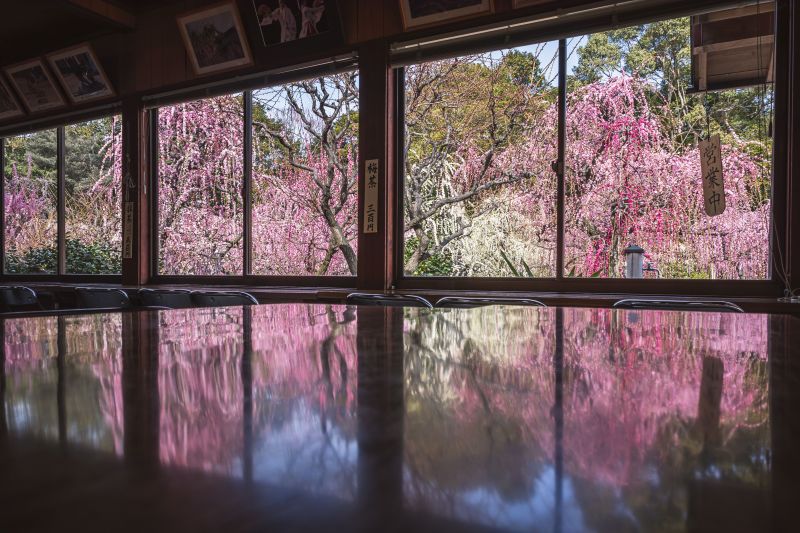
One of the highlights of spring in Japan are the Japanese plum blossoms . Let's introduce you to some popular and famous places and photo spots!
What's a Japanese plum blossom?
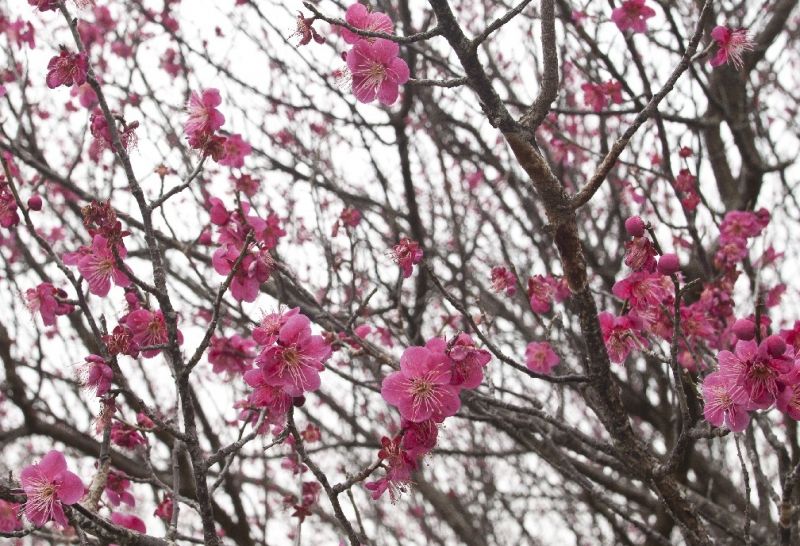
Japanese plum refers to the deciduous trees and fruits of the Prunus genus of the rose family. Apple, pear and apricot are some of the other fruit trees in this family.
The Japanese plum tree, which originated in China, has played an important role in Japanese culture since old times. In the Manyoshu (or “Collection of Ten Thousand Leaves”), which was compiled in the Nara Period, contains a large number of poems composed about Japanese plum blossoms. In addition to the beauty of the flowers of the Japanese plum tree, it is known to have various potencies; however, a distinction is made between the edible and ornamental varieties of the Japanese plum.
When do Japanese plum blossoms come into bloom?
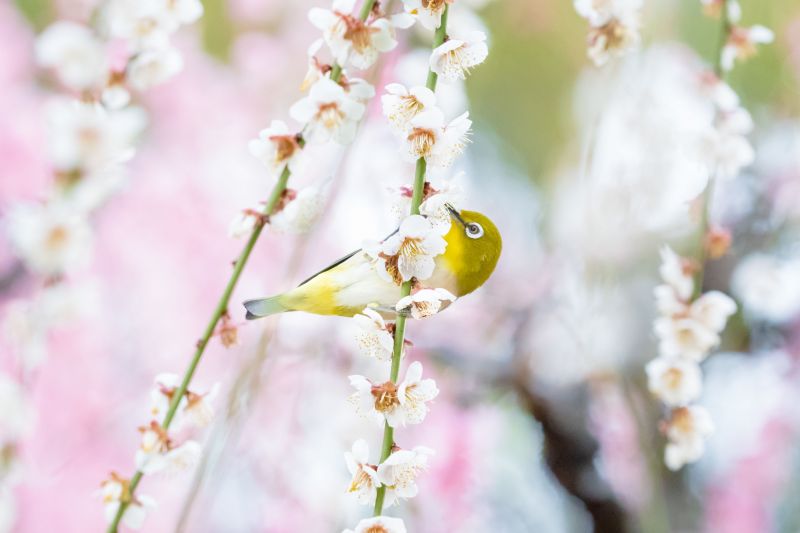
With Japanese plum blossoms being one of the first flowers to bloom in the year, they are associated with the beginning of spring. Japanese plum blossoms are popular in Japan as seasonal flowers that bloom ahead of cherry blossoms.
In most areas of Japan, including Tokyo, Japanese plum blossoms usually bloom some time in February or March, but some varieties may bloom even earlier.
In most parts of Japan, including Tokyo, flowering usually occurs from February to March, although some varieties flower earlier.
Whereas the flowering period for cherry blossoms is approximately seven to ten days, the flowering period for the Japanese plum blossom is longer, at about one month, which allows for a longer period in which they can be enjoyed and appreciated. For that reason, “Japanese plum blossom viewing festivals” are held in many parts of the country.
What varieties of Japanese plum blossoms are there?
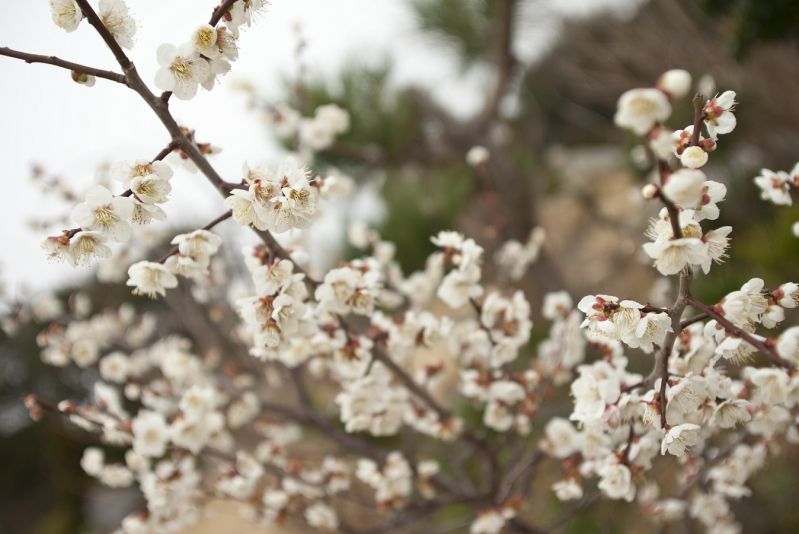
Just as with cherry blossoms, there exists a wide variety of Japanese plum blossoms, and most of them have been cultivated by people across the span of many centuries. Many Japanese plum blossoms have five petals, and their colors range from white to deep pink. There are also varieties of Japanese plum blossoms with double flowers and varieties of weeping Japanese plum blossom trees (similar in form to weeping willow trees). Unlike cherry blossoms, Japanese plum blossoms have a strong sweet aroma.
Japanese plum blossoms have a lot of meanings and uses in Japanese culture. As Japanese plum blossoms grow strong even during the cold winter, they are evocative of such things as luck and health. Also, Japanese plum blossoms have a really strong fragrance, and as this fragrance is detested by evil spirits, many Japanese plum trees are found at shrines and temples in Japan so as to ward off evil.
Where can Japanese plum blossoms be viewed?
There are many famous spots for Japanese plum blossoms in Japan, and Japanese plum blossom viewing festivals are held throughout Japan from mid-February through to March.
Popular Japanese plum blossom viewing spots
Kairakuen Park (Ibaraki Prefecture), Kitano Tenman-gu Shrine (Kyoto Prefecture), and Dazaifu Tenman-gu Shrine (Fukuoka Prefecture) are famous. Tenman-gu are shrines dedicated to the god of learning, Sugawara no Michizane, and Japanese plum blossom trees are planted on the grounds of these shrines as the enshrined Sugawara no Michizane had a deep love for Japanese plum blossoms. Recently, the Japanese plum blossoms of Mie Prefecture have become well-known, particularly in Asia.
Inabe City Agricultural Park (Inabe City)
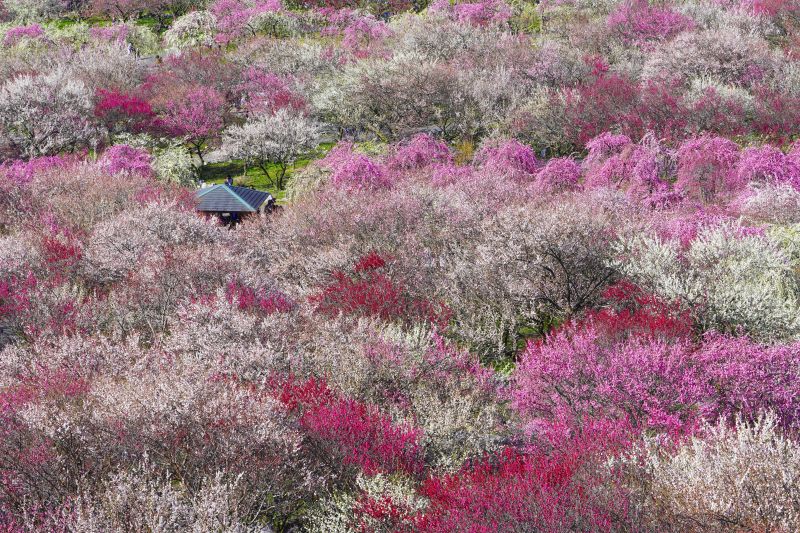
Flowers for all four seasons fill the park and its vast grove of Japanese plum blossom trees is stunning!
With 4,500 trees consisting of 100 varieties blooming in their full glory, if you look down from the hilltops, the view is as if the area has been carpeted in white and pink.
The Japanese plum blossom viewing festival is also held each March, which has made it a popular spot for photographers.
Suzuka Forest Garden (Suzuka City)
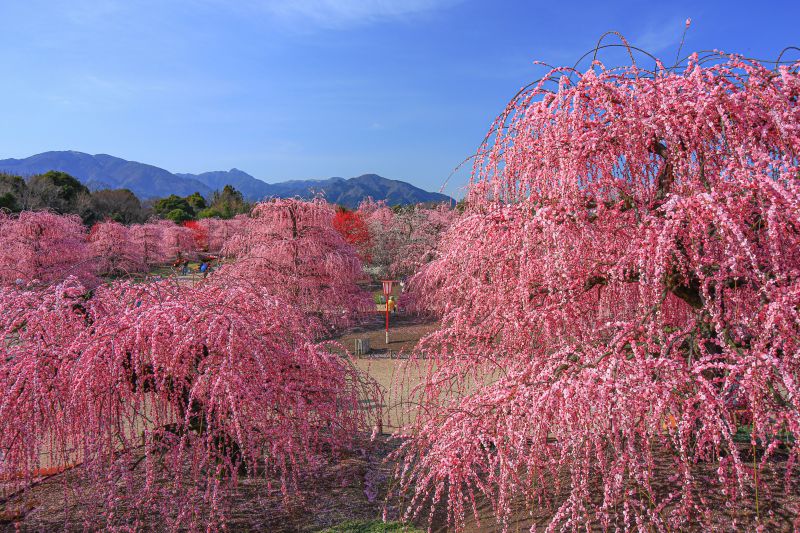
“In early spring, large pink flowers bloom in abundance, showing their large, graceful branches.” “Kurehashidare.”
Gorgeous Japanese plum trees such as “Kurehashidare” and “Ten no Ryu”, which are estimated as being over 100 years in age and said to be the oldest in Japan, are the works of master designers of Japanese gardens and are a true sight to behold.
The trees lit up with LED lighting look mysterious.
Lamp stands placed at the roots of the Japanese plum trees cast a gentle light on the trees.
During the Japanese plum blossom viewing festival, many visitors come from not just the nearby areas, but also from far away.
Yuki Shrine (Tsu City)
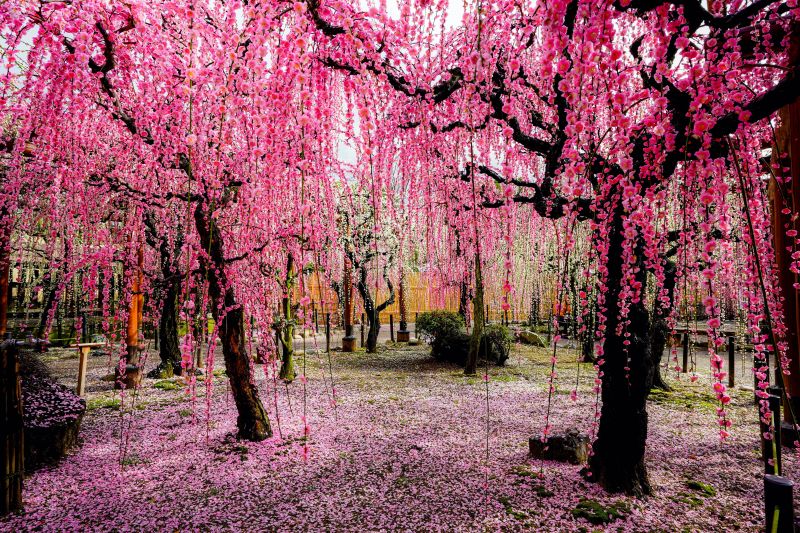
A famous spot for weeping Japanese plum blossom trees in Fujikata, Tsu City, Mie Prefecture. Yuki Shrine is dedicated to Lord Yuki Munehiro , who served Emperor Godaigo, and contributed to the establishment of the “Kenmu Restoration”.
On the grounds of the shrine and in its gardens, approximately 300 “weeping Japanese plum blossom trees” and 80 Japanese plum trees of ten other varieties have been planted.
So, everyone, why don’t you come to Mie Prefecture to view the Japanese plum blossoms?
Photo by Photo Gallery of Mie
○Inabe City Nogyokoen (agricultural park) https://www.kankomie.or.jp/en/spot/detail_8358.html
○Inabe Plum Grove: Spectacular Spring Scenery Rooted in Community
https://www.kankomie.or.jp/en/report/detail_248.html
○"Suzuka no Mori Teien" (Suzuka Forest Garden) https://www.kankomie.or.jp/en/spot/detail_22163.html
○Suzuka Forest Garden, a magnificent world-class view in Mie
https://www.kankomie.or.jp/en/report/detail_249.html
○Yuki Shrine https://www.kankomie.or.jp/en/spot/detail_2924.html